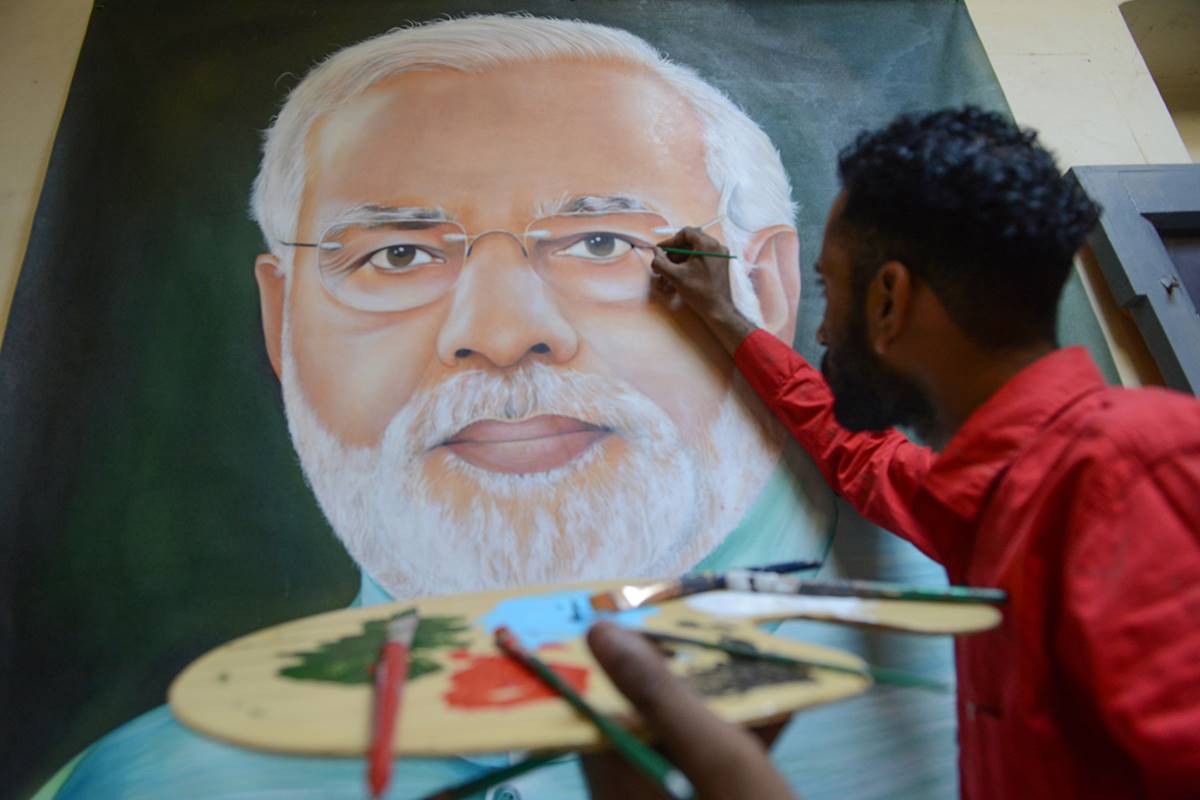Acutely aware of the growing ties between South Asian nations and China, India has crafted the inauguration of Narendra Modi as Prime Minister for a second term to recalibrate its diplomatic offensive in its neighbourhood and on the “Look East” policy.
In inviting leaders of the BIMSTEC (Bay of Bengal Initiative for Multi-Sectoral Technical and Economic Cooperation) grouping for the swearing-in ceremony on 30 May, the Modi Administration is offering an alternative platform for regional integration in the absence of a stalled SAARC (South Asian Association for Regional Cooperation), say experts.
Anil Wadhwa, former Secretary of India’s Foreign Ministry told the Financial Express: “BIMSTEC brings together some key countries for New Delhi in the region – Bangladesh, Sri Lanka, Thailand, Myanmar, Bhutan and Nepal are all nations with whom India has extensive economic linkages and programmes.”
Heads of state or government from all BIMSTEC countries will be attending the inauguration with only Thailand, which itself is in the throes of government-formation, sending a Special Envoy instead.
The regional grouping together accounts for 22 percent of the global population and a GDP of $2.8 trillion. With five members from the Indian sub-continent and two ASEAN member states, BIMSTEC forms a natural land and sea link between South and South-East Asia.
“It establishes SAARC countries’ network of cooperation excluding Pakistan and brings in the eastern neighbours of India which include Myanmar and Thailand,” said Prof. Ajay Dubey of the Jawaharlal Nehru University, New Delhi.
While the Modi government has underlined its desire to deepen its engagement with South/South East Asian nations, it is also de-hyphenating itself from Pakistan, as the crisis over Jammu and Kashmir terrorism continues.
In 2014, relations with Pakistan were relatively cordial. At the inauguration of Modi’s first term as Prime Minister, invites were issued to heads of all SAARC member nations including Pakistan, all of whom attended. The recent escalation in India-Pakistan tensions, however, has changed the scenario.
India wants to clearly signal its neighbourhood-first policy is alive and well.
As it is, of the SAARC invitees from 2014, only Pakistan, Afghanistan and Maldives have been left out of the 2019 inauguration with the BIMSTEC invites. And Indian diplomats have worked behind-the-scenes to ensure both these ‘close allies’ are fully on board with New Delhi’s diplomatic strategy.
Additionally, to underline both the scale of India’s regional vision and its strategic interests, the President of the Central Asian Kyrgyz Republic which currently holds the chair of the Shanghai Cooperation Organisation (SCO) and the Prime Minister of the Indian Ocean island nation of Mauritius have been invited and are attending Modi’s inauguration.
But as veteran diplomat KC Singh said on an Indian television debate: “By using the BIMSTEC route, the Indians have ensured the door has not been completely shut on Islamabad which it would have been if, say, India had structured the invite for all SAARC neighbours but left out Pakistan.”
Last but not least, India’s regional outreach has China very much in mind.
New Delhi has signalled to Beijing that it will pursue its strategic ambitions and deepen its economic-cum-civilizational links in the greater South Asia region including Central Asia and the Indian Ocean but China remains its priority for engagement among major powers.
To that end, work has already begun on an informal summit to be held between President Xi Jinping and Prime Minister Narendra Modi following up on the first such meeting at Wuhan, China, in April 2018.
Reports say India has proposed 11 October as the date for the summit which will likely be hosted at the world’s oldest city – Varanasi, India.
It is not incidental that the Hindu holy city of Varanasi is also the parliamentary constituency represented by Modi.
Asia should be prepared for an increasingly active India which is out to reshape its relationships in the region.
INDIA-BIMSTEC RELATIONSHIP STATUS
Sri Lanka: Residual resentment for India’s role in the civil warin the country and its economic self-interest propelled Colomboto a closer relationship with China over the past decade. In recent years, India’s made a concerted effort to rebuild the bilateral relationship. Growing security cooperation and joint infrastructure projects are signs of this. Public suspicion of India’s role remains an issue, though.
Rating: Average
Bhutan: The Himalayan Kingdomis the only country in South Asia which is an all-weather ally for New Delhi, as was seen in the Doklam Plateau confrontation between China and India last year.
Rating: Excellent
Nepal: The traditional‘buffer state’ between India and China, the current KP Oli administration is considered pro-Beijing. Belt and Road Initiative projects have proven a major draw for a deepening Nepal-China relationship. India, however, is stressing the free mobility of citizens between the two nations and the job opportunities its growing economy provides in addition to the cultural and spiritual links between the two peoples.
Rating: Below Average
Maldives: After the recent parliamentary elections in the Indian Ocean island nation, India has once again found a simpatico administration in the Maldives which had traditionally been under its so-called ‘sphere of influence’. India has moved quickly to re-establish close ties and has covered the Maldivian national debt to China, which had moved in when India took its eye off the ball, with a $ 1.5 billion loan package.
Rating: Above Average
Bangladesh: The bilateral relationship could have been better but it is doing reasonably well, all things considered. The warmth is back, especially under Sheikh Hasina, though differences on issues such as Rohingya repatriation and sharing of river waters persist. The chill which had begun to creep into the relationship under an earlier Dhaka regime over radicalisation attempts in the predominantly moderate Muslim state haslargely dissipated.
Rating: Average
(ANN)












